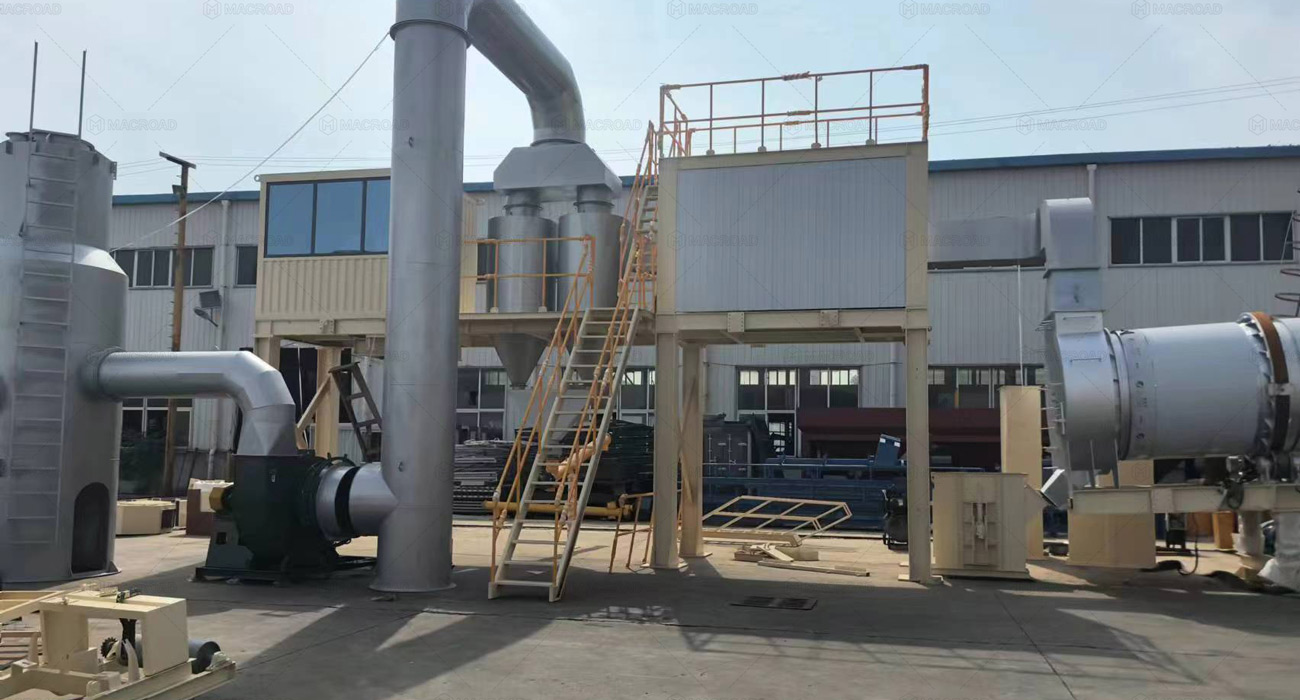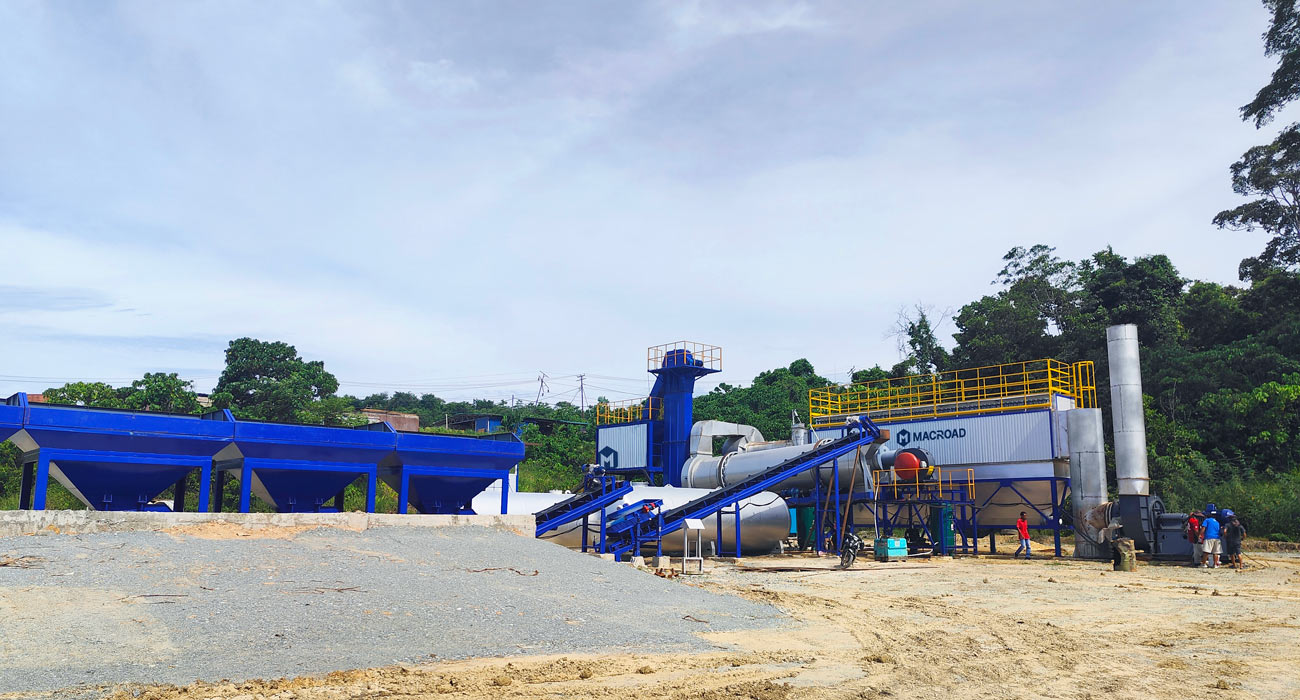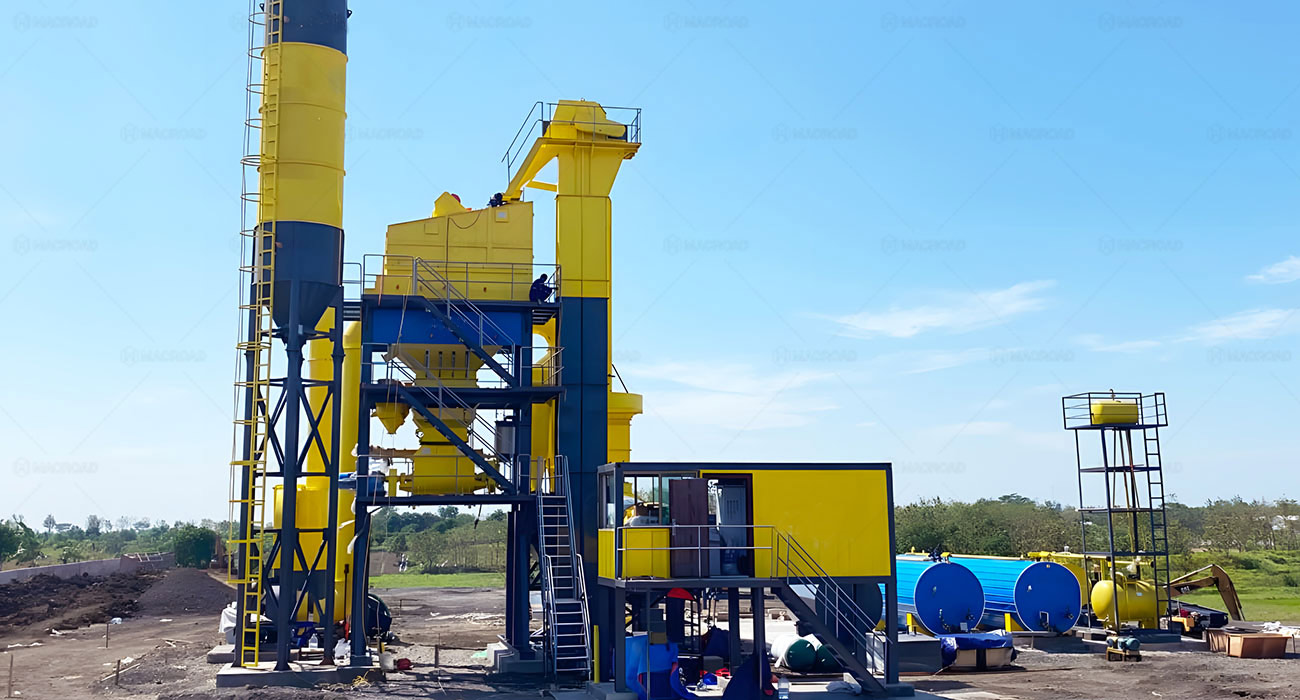Collaborative Design of Airflow and Aggregate Movement in Asphalt Drum Mix Plants
In an asphalt drum mix plant, the design of both the hot air flow trajectory and the movement of aggregates within the drum is crucial for achieving optimal mixing and drying efficiency. This collaboration is essential to avoid local overheating or uneven mixing, which can negatively impact the quality of the final asphalt product. This article explores how these design elements work together, particularly concerning aggregates of different particle sizes, and how they address the balance between drying efficiency and asphalt coating uniformity.

Optimizing Airflow and Aggregate Trajectories
The trajectory of hot air flow in an asphalt drum mix plant is intricately linked to the movement of aggregates inside the drum. The design must ensure that hot air circulates efficiently, promoting even heating while preventing localized overheating. When aggregates are introduced into the drum, their movement should be synchronized with the airflow to maximize exposure to heat without prolonging their time in high-temperature zones.
For aggregates of different sizes, such as fine sand and gravel, differentiated adjustments to the drum's design are necessary. This includes varying the angle and spacing of the flights—the internal structures that lift and drop the aggregates as they move through the drum. By tailoring these parameters, the plant can optimize the trajectory of both the hot air and the aggregates, ensuring that smaller particles are adequately heated without being subjected to excessive temperatures that could lead to asphalt aging.

Balancing Drying Efficiency and Coating Uniformity
The challenge in designing an asphalt drum mix plant lies in balancing the drying efficiency of aggregates with the uniformity of asphalt coating. Aggregates must be sufficiently dried to ensure proper bonding strength with the asphalt; however, staying too long in high-temperature zones can result in aging of the asphalt binder.
To address this contradiction, engineers carefully design the spacing and arrangement of flights within the drum. For example, flights can be positioned to create zones of varying temperatures, where fine aggregates can pass through higher-temperature areas quickly, while coarser aggregates may linger longer to achieve the necessary drying. This strategic design allows for efficient heat transfer while minimizing the risk of asphalt degradation.
Additionally, the use of adjustable flight designs can further enhance this balance. By allowing operators to modify the height and angle of flights, the plant can adapt to different aggregate compositions and moisture levels, thereby optimizing drying times and ensuring a uniform coating of asphalt over the aggregates.

Enhancing Production Quality Through Innovative Design
The collaborative design of airflow and aggregate movement not only improves the efficiency of the asphalt drum mix plant but also enhances the overall quality of the asphalt produced. By preventing uneven heating and ensuring that all aggregates receive adequate drying, operators can achieve a consistent mixture that meets stringent quality standards.
Macroad emphasizes the importance of these design considerations in their asphalt drum mix plants, providing solutions that cater to the unique challenges faced by asphalt producers. By investing in advanced technology and thoughtful design, companies can ensure that their plants operate at peak efficiency, resulting in high-quality asphalt that stands up to the demands of various applications.
In conclusion, the trajectory of hot air flow and the movement of aggregates in an asphalt drum mix plant are collaboratively designed to achieve optimal performance. By making differentiated adjustments for aggregates of varying sizes and balancing drying efficiency with asphalt coating uniformity, these plants can produce high-quality asphalt while minimizing the risks associated with overheating and insufficient drying. This intricate balance is essential for meeting industry standards and delivering reliable results in asphalt production.

Optimizing Airflow and Aggregate Trajectories
The trajectory of hot air flow in an asphalt drum mix plant is intricately linked to the movement of aggregates inside the drum. The design must ensure that hot air circulates efficiently, promoting even heating while preventing localized overheating. When aggregates are introduced into the drum, their movement should be synchronized with the airflow to maximize exposure to heat without prolonging their time in high-temperature zones.
For aggregates of different sizes, such as fine sand and gravel, differentiated adjustments to the drum's design are necessary. This includes varying the angle and spacing of the flights—the internal structures that lift and drop the aggregates as they move through the drum. By tailoring these parameters, the plant can optimize the trajectory of both the hot air and the aggregates, ensuring that smaller particles are adequately heated without being subjected to excessive temperatures that could lead to asphalt aging.

Balancing Drying Efficiency and Coating Uniformity
The challenge in designing an asphalt drum mix plant lies in balancing the drying efficiency of aggregates with the uniformity of asphalt coating. Aggregates must be sufficiently dried to ensure proper bonding strength with the asphalt; however, staying too long in high-temperature zones can result in aging of the asphalt binder.
To address this contradiction, engineers carefully design the spacing and arrangement of flights within the drum. For example, flights can be positioned to create zones of varying temperatures, where fine aggregates can pass through higher-temperature areas quickly, while coarser aggregates may linger longer to achieve the necessary drying. This strategic design allows for efficient heat transfer while minimizing the risk of asphalt degradation.
Additionally, the use of adjustable flight designs can further enhance this balance. By allowing operators to modify the height and angle of flights, the plant can adapt to different aggregate compositions and moisture levels, thereby optimizing drying times and ensuring a uniform coating of asphalt over the aggregates.

Enhancing Production Quality Through Innovative Design
The collaborative design of airflow and aggregate movement not only improves the efficiency of the asphalt drum mix plant but also enhances the overall quality of the asphalt produced. By preventing uneven heating and ensuring that all aggregates receive adequate drying, operators can achieve a consistent mixture that meets stringent quality standards.
Macroad emphasizes the importance of these design considerations in their asphalt drum mix plants, providing solutions that cater to the unique challenges faced by asphalt producers. By investing in advanced technology and thoughtful design, companies can ensure that their plants operate at peak efficiency, resulting in high-quality asphalt that stands up to the demands of various applications.
In conclusion, the trajectory of hot air flow and the movement of aggregates in an asphalt drum mix plant are collaboratively designed to achieve optimal performance. By making differentiated adjustments for aggregates of varying sizes and balancing drying efficiency with asphalt coating uniformity, these plants can produce high-quality asphalt while minimizing the risks associated with overheating and insufficient drying. This intricate balance is essential for meeting industry standards and delivering reliable results in asphalt production.
Signatur